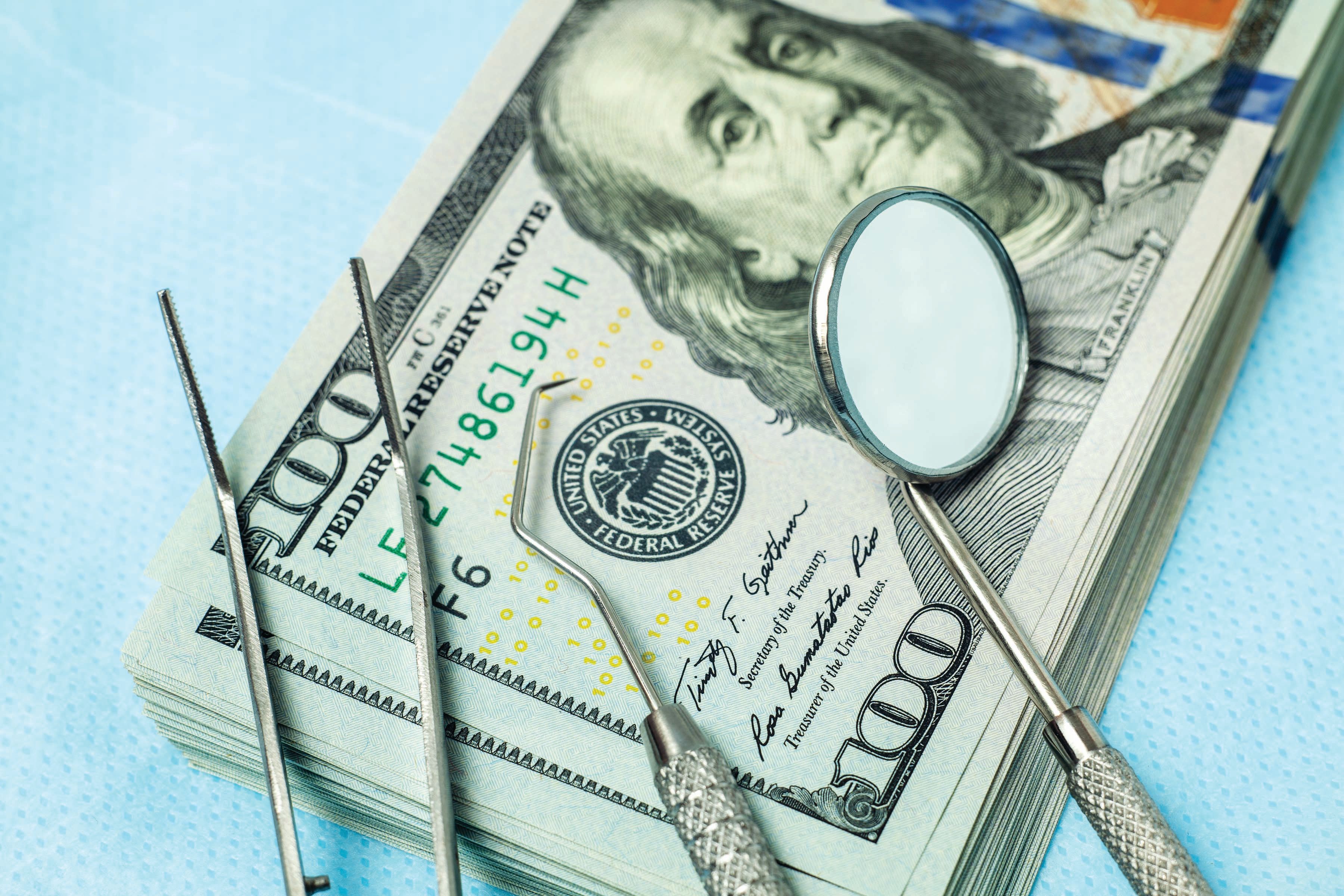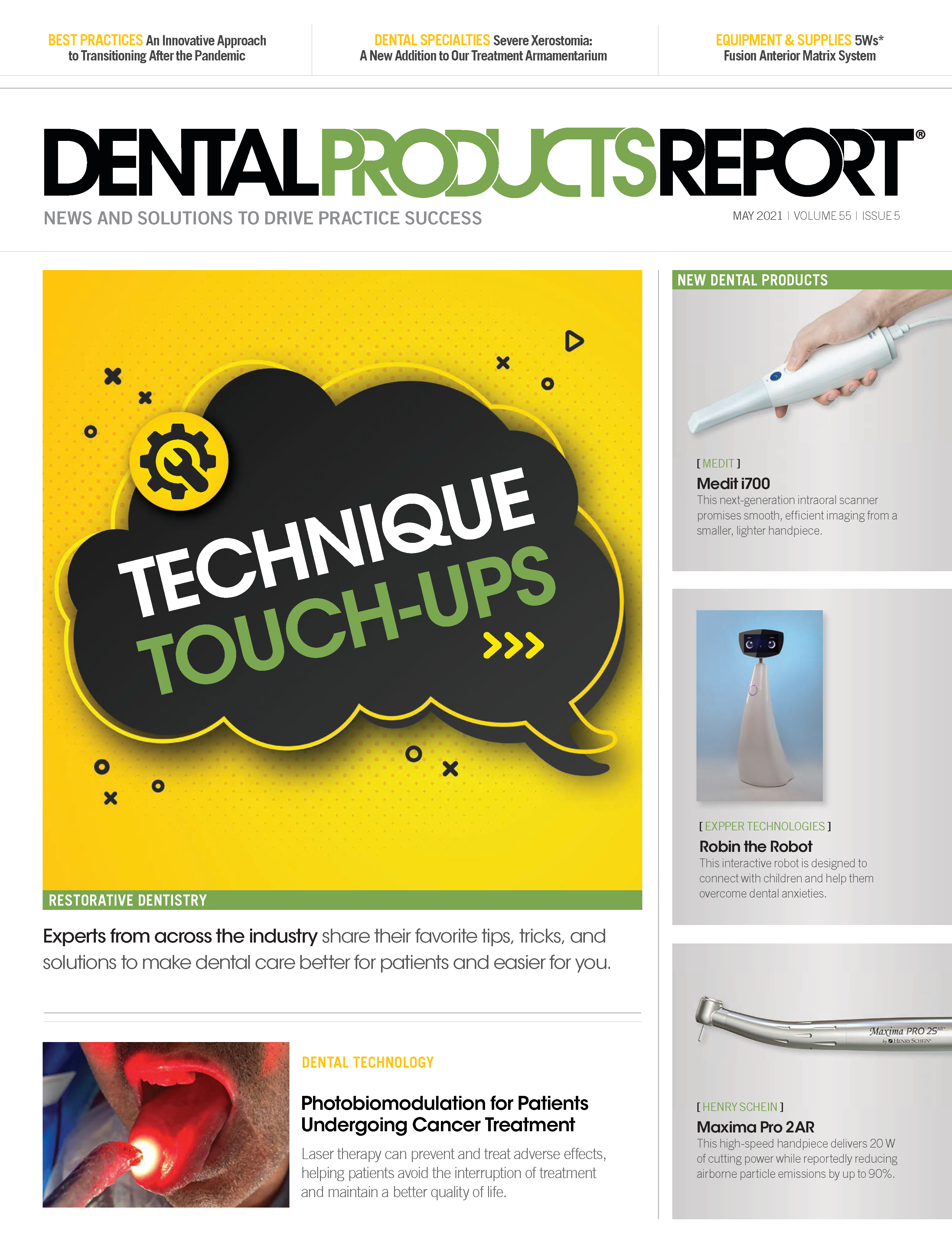An Innovative Approach to Transitioning After the Pandemic
Deferred compensation arrangements enable sellers to pocket more money despite lower dental practice values.
ADRAGAN / STOCK.ADOBE.COM

DENTIST MONEY DIGEST: By now, we’ve all heard about how COVID-19 reduced the gross revenue of many dental practices across the country, forcing many to cut staff, reduce overhead and use as many government loans available to remain open.
Because patients were concerned about possibly waiting in an office for their appointment with others who may or may not have been wearing masks, many were hesitant to book in-person dental appointments unless they were experiencing pain.
From the middle to the end of 2020, more people began to visit the office again as the cleanliness and efficiency of the waiting area and operatories were conveyed to the patients as being as sanitized as they could be, and then as vaccinations became available in December. The gross revenue of the practices started to increase from that point, but the damage had been done from early in the year. This caused a decrease in the gross revenue of the practice as well as in the net profit.
No matter who the dental practice evaluator, when preparing the valuation and including the results of the operations for the year of the virus, most practices’ overall value were lower or their anticipated growth was stymied. Some practices had more of a reduction in value than others, but they all experienced at least some inconvenience that, in turn, reduced the value and offering prices that many sellers of dental practices received. When combined with the tax on the sale, the net amount to the transitioning dentist shrunk from what he or she thought was going to be available upon the sale.
How to Overcome at Least Some of This Loss
Many in the dental community know about various retirement plans such as 401(k)s, simple individual retirement accounts (IRAs), Roth IRAs, and simplified employee pensions. When adopting one of these for their practice, dentists and their advisers look at the costs of implementing the trust document. They want to know how much the owner will get in the way of benefits and how much the employees will receive. Decisions are made about these items as well as the cost to begin the plan and the annual administration fees. Dentists and their certified public accountants (CPAs) or other financial people know that the payments for these trusts are tax deductible and that the long-term benefit is a form of savings that is unparalleled.
There are, however, dental CPAs who had another idea for the transitioning dentists that assists both the buyer and the seller. These advisers—who use the idea of deferred compensation arrangements when matching up a buyer with the selling dentist—were far sighted in their thinking. Because they know payments to the plan are tax deductible, they educate the selling dentist to understand that waiting for some of the money from the sale will defer tax consequences for quite some time. This arrangement is not like an installment sale, when the transitioning dentist waits for their money without protection of the principal or earnings. In addition, more explanation/education provides the seller the opportunity to earn income on funds in the deferred account without tax until those monies are withdrawn.
Innovative Method vs Traditional Approach
What follows is an example of the potential additional worth from a lower-valued transition.
Suppose the practice valuation presents a hypothetical amount of $500,000—even though prior to COVID-19, it may have been $650,000. Because the dentist probably withdrew most of his or her profits, the hypothetical basis to the dentist is zero. The sale is for $500,000 because the offers to purchase the practice were in that range, and the basis to the seller would be zero. The hypothetical gain would be $500,000.
The seller is angry at the new low value but can’t do much about it—other than wait for the value to increase. Unfortunately that could take a year or more.
Let’s take a look at the results for this innovative method and compare them to the typical transition approach. (Because the seller gets extra savings by using the employer-sponsored qualified retirement plan, their anger may be diffused a bit.)
How do the 2 methods compare?
For a typical transition, in which goodwill is the dominant allocation of the asset used for the sale, a capital gain to the selling dentist is achieved. This allows the lowest income-tax rate available to the seller but also creates somewhat of a hardship from a tax perspective to the buyer. The seller has his or her low tax rate of a capital gain, but the buyer must amortize the majority of the purchase price over 15 years. In a state with a reasonable tax rate, the federal and state tax to the seller will hypothetically be approximately 25%, so the seller will receive $375,000 ($500,000 × 75% of proceeds). For the buyer, who must amortize the $500,000 over 15 years, he or she writes off $33,333 ($500,000 ÷ 15) each year for 15 years.
At a 50% tax rate to the buyer—including social security doubled as the owner, plus federal and state taxes—the buyer saves approximately $16,667 per year. By saving the amount at a 50% tax rate, however, it also costs the buyer the other 50% of the amount not saved, or $16,666 per year for 15 years for a total cost of $250,000. So to be precise, it cost the seller $125,000 and the buyer $250,000 to enter into this transition in the typical manner.
Let’s compare this methodology to the creative thinking of the dental CPA who uses an innovative approach with ideas already known to the dentist by way of his or her qualified employer-sponsored retirement plan. Using the proper allocation of deferred and nondeferred compensation, the buyer adopts a new retirement plan, and the seller and employees are participants in it, with possibly another plan that is able to discriminate by job classification. The seller gets a very modest down payment, and instead, the dental practice allocates to the seller a large amount into the newly adopted retirement plan (based on his or her age and other criteria) of approximately $100,000 per year for 5 years.
We all know that the income is not taxable until withdrawn, and the dental practice is guaranteeing the sum of defined benefit upon the normal retirement age that is to be received by the selling dentist. This arrangement enables the seller to have no tax upon the sale and the buying dentist to have a deduction of the $100,000 per year for 5 years, with little to no tax. At the end of the 5-year period, the seller starts withdrawing the $100,000 per year and pays tax at that time on those funds. The funds paid into the retirement plan on behalf of the seller accumulate at the rate of the $100,000 per year for 5 years, plus the income on that amount.
Final Summary
Instead of the seller having $375,000 in hand, he or she receives $100,000 per year, hypothetically starting in year 6. What follows is a quick look to what the seller will have in the retirement account based on a conservative 5% per year for the 5 years of funds going into the plan from the dental practice:
At the end of year 1: $100,000 plus earnings of $5,000 for $105,000
At the end of year 2: $110,250 ($105,000 × 1.05) plus the second year’s $100,000 retirement contribution, which will be equal to $105,000. So at the end of year 2, the total is $110,250 plus $105,000 for $215,250.
At the end of year 3: The first $100,000 will be $115,763 ($110,250 × 1.05), plus the second year’s $100,000, which would be worth $110,250 ($105,000 × 1.05), and the third year’s $100,000, which would be $105,000. At the end of year 3, there is a total of $331,013 ($115,763 + $110,250 + $105,000) and so on—until at the end of year 5, there is a total of $580,193. As the first $100,000 gets withdrawn, there is still $480,193 left, upon which the seller is still earning income.
Effectively, the seller is paying tax on the withdrawals with funds that he or she never would have had if the typical sale had taken place because we are comparing a starting amount of $375,000 to $500,000. It will take almost 14 years to reduce the total in the account to zero. This means that the selling dentist will have received more than $1,000,000 before tax by using this innovative approach.
